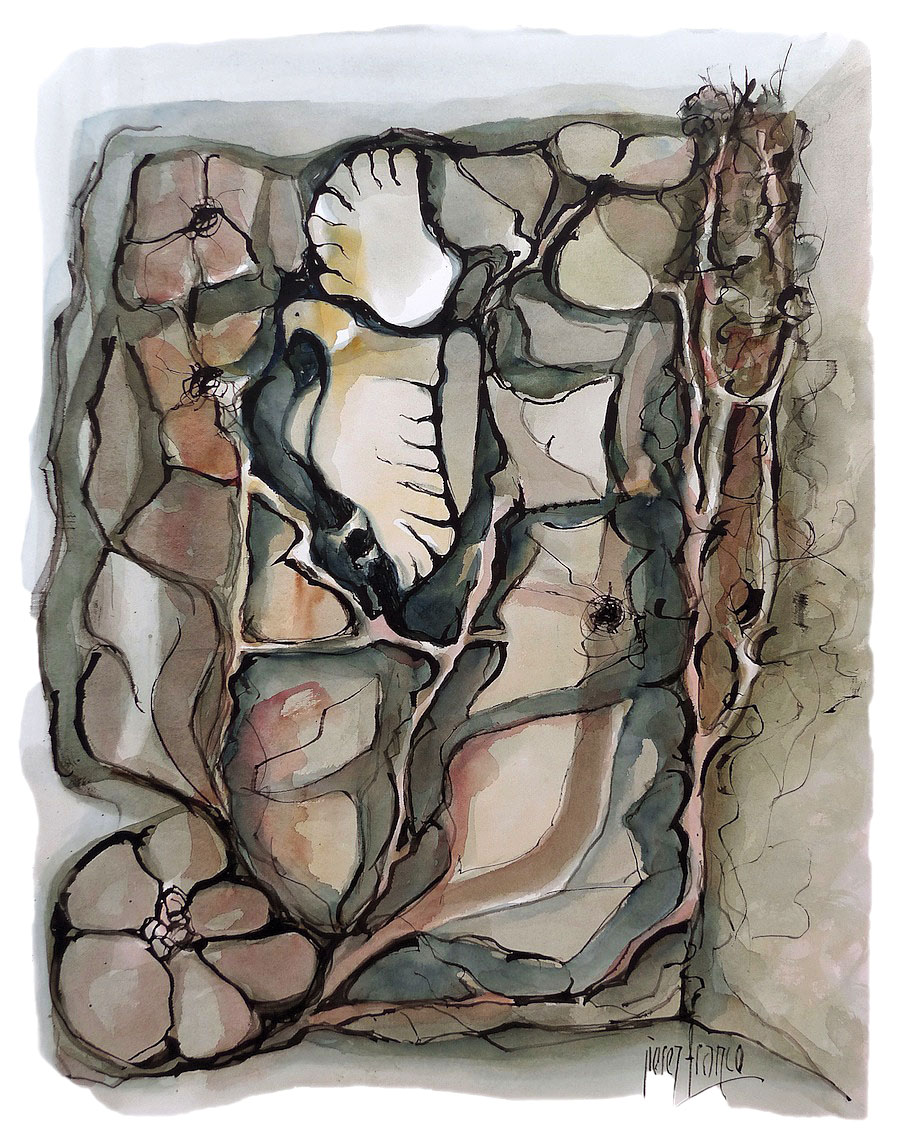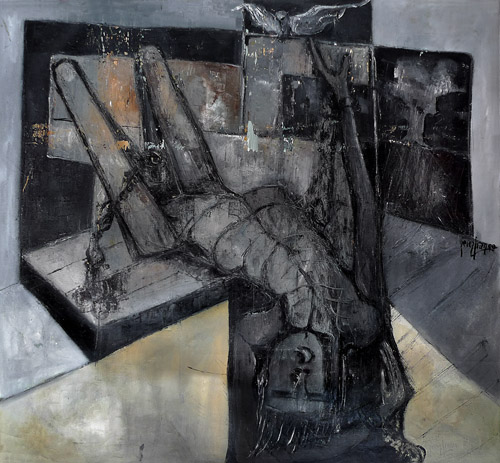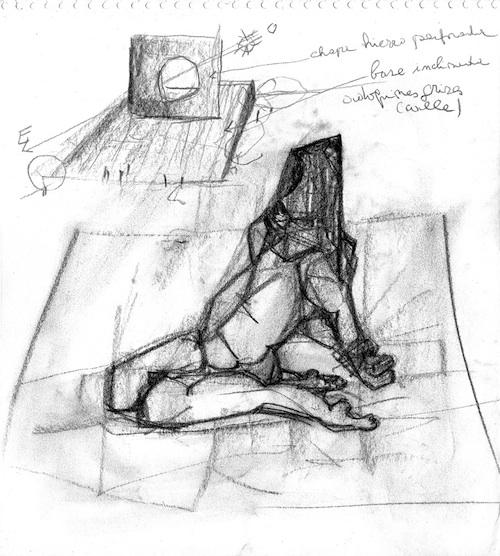The Serious Side of Pérez Franco

It is therefore no surprise that the vast majority of the artist's paintings cast a positive vibe. They focus on life, love and liberty. Simple pleasures. Peace doves are a common motif throughout Pérez Franco's body of work. The late Victor Fuenmayor — a long time friend and fellow professor — put it most succinctly, "Carlos crystallized human emotions and extracted minute traces of beauty and grace from places that nary an untrained eye could." The message was hopeful, the method was clear: Take the high road and look at the good in people. Joy could be found in even in the most mundane daily task or boring routine. Life was good. Simple was good. Even during hardship there was no value in whining since nobody was listening anyway.
Pérez Franco never ceased being a benevolent spirit for his family, friends and colleagues. Three decades of students universally adored the man who helped them reach their academic & professional goals.
 "Consequencias: The Gurney" Oil/Linen 125x125cmLest we forget, there was another side, a more critical side, to Carlos Pérez Franco. Uruguay and the Southern Cone suffered through over a decade of harsh military rule, a dark period when many university colleagues either disappeared or were jailed and tortured. Passports were rescinded. Families were torn apart, babies were stolen. Property was confiscated, jobs lost. Women were abused and traded like poker chips. Even after the "junta" relinquished control back to a civilian government, inflation spiraled and salaries fell short. In less than two decades, political and corporate corruption had virtually obliterated a middle class that for over a century had been Uruguay's pride and joy as the so-called "Switzerland of South America."
"Consequencias: The Gurney" Oil/Linen 125x125cmLest we forget, there was another side, a more critical side, to Carlos Pérez Franco. Uruguay and the Southern Cone suffered through over a decade of harsh military rule, a dark period when many university colleagues either disappeared or were jailed and tortured. Passports were rescinded. Families were torn apart, babies were stolen. Property was confiscated, jobs lost. Women were abused and traded like poker chips. Even after the "junta" relinquished control back to a civilian government, inflation spiraled and salaries fell short. In less than two decades, political and corporate corruption had virtually obliterated a middle class that for over a century had been Uruguay's pride and joy as the so-called "Switzerland of South America."
On a local level, adults of families held numerous jobs to survive. Women suffered from unreported domestic violence. Minors were forced to the streets to supplement the family income by any means available. Basic human rights were constantly overlooked. Crime escalated while the quality of education plummeted through under-funding, just as they would in any developing nation that couldn't provide for basic services and privileges for its citizens. Indeed, political and government work became highly sought as the only secure positions, leading Pérez Franco to denounce on many occasions the ghastly electoral expenditures, cronyism, the blacklist system and lack of direct political representation.
 "Monument to the Disappeared"Thousands of miles away in Venezuela, the scene was no different as each subsequent government failed to protect its people against rampant street crime, corruption, produce shortages and spiraling inflation. Monetary exchange controls made transactions difficult for companies trying to conduct international business as well as foreign students and pensioners who were cut off from their funds. Whether the national oil company was state-controlled or sold to the highest transnational bidder made no difference. The nation's massive resource wealth rarely filtered down to the people who needed it most... despite what political propaganda would suggest.
"Monument to the Disappeared"Thousands of miles away in Venezuela, the scene was no different as each subsequent government failed to protect its people against rampant street crime, corruption, produce shortages and spiraling inflation. Monetary exchange controls made transactions difficult for companies trying to conduct international business as well as foreign students and pensioners who were cut off from their funds. Whether the national oil company was state-controlled or sold to the highest transnational bidder made no difference. The nation's massive resource wealth rarely filtered down to the people who needed it most... despite what political propaganda would suggest.
Despite decades of hardship throughout the continent, Pérez Franco and his contemporaries usually kept a stiff upper lip for self preservation. However, suggestions of endured strife and discontent occasionally seep into some of his work, often cloaked but nevertheless there for anyone aware of the region's history. No review of Pérez Franco's oeuvre would be complete without mentioning this darker side, the challenges faced by most Latin American artists throughout the latter portion of the 20th century and beyond.
The CPF estate has a very small selection of critical works, most of which were never shown publicly due to either govenrment or self-imposed censorship.



